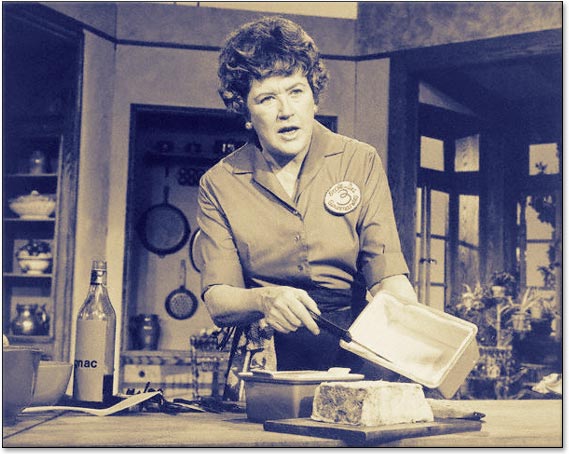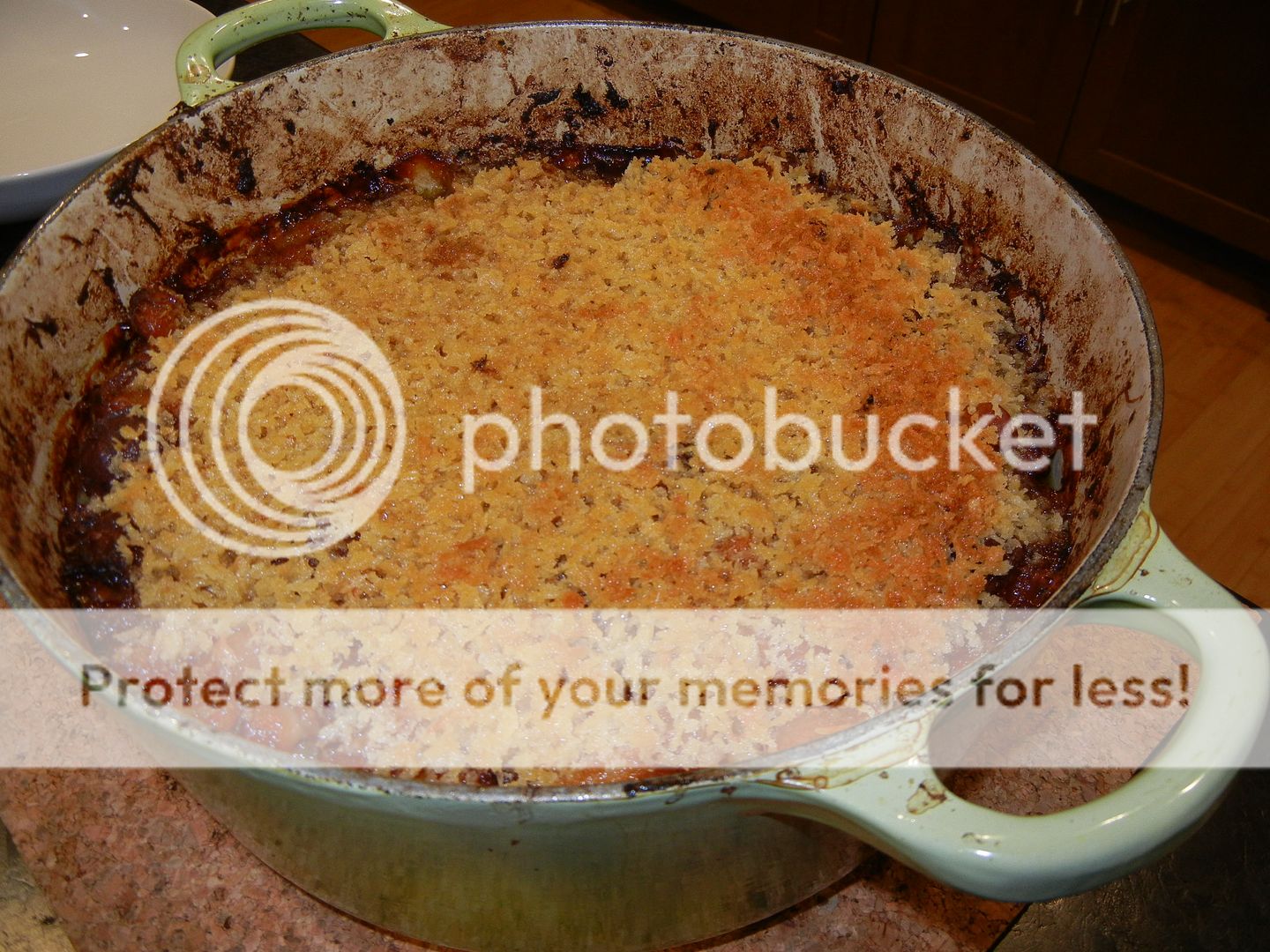I don’t do a great deal of traditional French cooking. Not for any real good reason other than a preference for the flavor profiles of Italian & Spanish fare of a rustic variety. If you thumb through Julia Child’s “Mastering” books you find that they are dominated by the “cuisine bourgeoisie” or the slightly higher-end of the French cookery landscape. There are exceptions to this of course, and Cassoulet is one of them.
Cassoulet is an old-world French peasants dish named for the vessel in which it is traditionally cooked, a “cassole” which is usually a deep, rather than wide, glazed stoneware baking dish. There are a number of variations according to region. The most common is the Toulouse variety which is dominated by Goose Confit as a protein with a bit of mutton. Not surprising as Toulouse is the heart of the Foie Gras production region. You gotta do something with all those geese once their ambrosial livers have been harvested. Other variations are the Cassoulet de Castelnaudary which features mainly pork and the Cassoulet de Carcassonne which often features Partridge.
 |
| Sorry Julia. |
I live in a pretty nice area and have access to some exceptional markets and butchers but Goose is tough to find except during the holidays, Goose-Confit and Goose fat (all called for in Julia’s recipe) are nigh-impossible to find…at least until Dittmers in Mountain View re-opens. So in an effort to avoid the ponderous process Julia ascribes and to find suitable alternative ingredients I decided to create my own Cassoulet recipe by plucking bits and pieces from hers and a few others and getting creative with some alternatives.
So how is this "manly", you ask? We've got not one type of meat, not two, or even three...we have FIVE kinds of meat in this recipe AND duck fat besides. That, my friends is manly in any language, even French.
So how is this "manly", you ask? We've got not one type of meat, not two, or even three...we have FIVE kinds of meat in this recipe AND duck fat besides. That, my friends is manly in any language, even French.
Be forewarned. Though shorter than Julia’s, this still takes a LONG time to make. Remember to soak your beans the night before you begin the cooking. Start this early in the day if you plan to have it for a Sunday dinner, or better yet, prep it on Saturday up to “Step 5“ then finish off "Step 6" the next night. The flavors will marry a bit and the awesome will increase by an order of magnitude.
Hardware:2 Large “Dutch Oven” (either cast iron or enameled iron like Le Cruset)1 Large Cast Iron skillet1 1ga stock pot or large mixing bowlKitchen twine
Software:1lb Dry Beans, either “Great Northern” or “Cannellini” (the former is more firm and might hold up to cooking/stirring better, but I prefer the flavor of the latter)1 Whole Garlic bulb (peeled and chopped)2 Onions (medium chop)2 Carrots (medium chop)2 whole tomatoes (1/4” dice)4 sprigs fresh thyme1 sprigs fresh rosemary2 large bay leaves2 cups stock (pork, veal or chicken will work)1 cup white wine10tbsp duck fat (either reserved from previous meals or ask your butcher for some when you buy your duck-confit)4 Confit duck leg/thighs2 large ham hocks1lb pork shoulder (cut into ~1” cubes)1lb Sausage (any combo of garlic/herbs but stay away from “Italian”)1/2lb salt pork or pancetta (cut into ~1/2” cubes)2 cups bread crumbs (blast an old baguette in your food processor)
 |
| The Key, Duck Fat |
Step 2. Heat 2tbsp of duck fat in one of your dutch ovens over a medium-high flame. Add ½ of your garlic, onions and carrots and lightly brown them (NOTE: Browning to gain a bit of caramelization on the veg and in the pan rather than a “sweat”). Then drop in the ham hocks and the beans along with the water they were soaking in and bring to a boil. Reduce the heat to a medium simmer and let it cook for about 1.5hrs.
Step 3. While your beans and hocks are cooking, heat 2tbsp of duck fat in your other dutch oven over a medium-high flame. Toss in the pork shoulder and brown for about 5-6min. Toss in the pancetta and brown for about 5min. Toss in your remaining garlic, onions, carrots and tomatoes and cook until the veg is lightly browned. Tie your thyme and rosemary with the twine and pop that in the pot along with the bay leaves. Pour in the wine and cook until the liquid reduces by at least ½. Pour in the stock and cook until the liquid has reduced by about 1/3 which should roughly coincide with the completion of the cooking in Step 2.
Step 3. Remove the ham hocks from the pot with the beans and let them cool a bit on a cutting board. Remove the skin and pluck off as much of the meat as possible. Discard the bones and skin and toss the meat into the “Step 3" pot.
 |
| Searing Duck While The Beans & Hocks Cook |
 |
| Duck Confit.....YUM! |
Step 6. Heat your oven to 300deg. then cover with your breadcrumbs and pop it in the oven, uncovered for 3 hours. Don’t stir it or goof around with it, just let it be. After 3hrs has elapsed switch your oven from bake to broil to toast up the breadcrumbs if they aren’t already brown which should only take a couple of minutes.
Serve with a fresh baguette and a modest French varietal rather than a blend for authenticity. We had a nice Grenache Noir from Côtes du Rhône and it was fantastic.


No comments:
Post a Comment